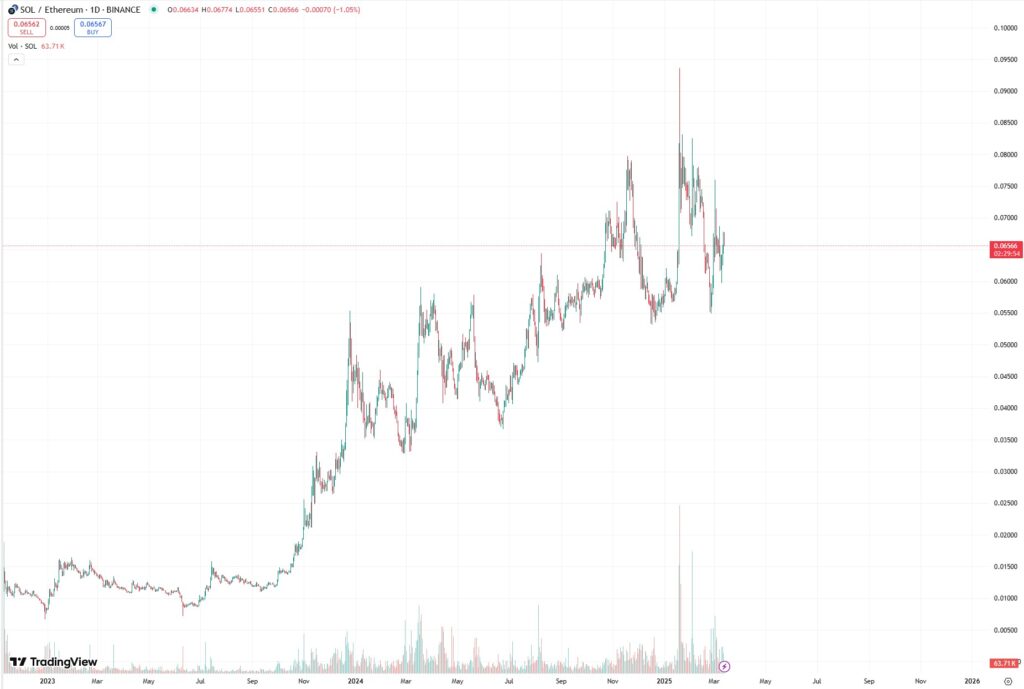In a significant move for the cryptocurrency industry, the Chicago Mercantile Exchange (CME) is set to launch Solana (SOL) futures on March 17, 2024. This development is more than just a new trading option; it symbolizes a key step towards the anticipated listings of Solana exchange-traded funds (ETFs) in the United States. Chris Chung, founder of the Solana-based platform Titan, indicates that this regulatory advance may well pave the way for the US Securities and Exchange Commission (SEC) to approve proposed spot Solana ETFs by asset managers VanEck and Canary Capital as soon as May.
“The existence of regulated Solana futures signals to regulators that Solana is maturing as an asset,” Chung told Cointelegraph. “This makes it easier for them to greenlight additional financial products of similar risk and type.”
Futures contracts, which are agreements to buy or sell an asset at a future date, provide essential benchmarks for the performance of cryptocurrencies, thus supporting the development of valid futures markets. With CME already hosting futures for major cryptocurrencies like Bitcoin and Ether, the launch of SOL futures represents a growing recognition of Solana within the financial sector.
Chung emphasized that these new products could shift the narrative surrounding Solana, steering growth beyond its previous reliance on memecoins — now noted to account for about 80% of the network’s revenues, according to VanEck. He argues that the future of Solana lies in stable, long-term applications like payments and remittances, rather than the volatile world of memecoin trading, particularly following recent market downturns linked to memecoin scandals.
In terms of competition, Solana’s trading volumes are reportedly rivaling those across the entire Ethereum ecosystem during this period, as retail investors have expressed interest in SOL especially given the recent struggles faced by Ethereum. With a promising forecast for Solana ETFs, investors are watching closely to see if they will emerge as a compelling option outside of Bitcoin, amid the ups and downs in the crypto market.
Impact of Solana Futures Launch on Financial Markets
The upcoming launch of Solana (SOL) futures on the Chicago Mercantile Exchange (CME) is poised to significantly influence the cryptocurrency landscape. Here are key points about this development:
- Launch Date:
- March 17: CME is set to introduce Solana futures, marking a crucial step in regulated cryptocurrency markets.
- Paving the Way for ETFs:
- Experts believe the launch of SOL futures will facilitate the approval of Solana exchange-traded funds (ETFs) by the U.S. Securities and Exchange Commission (SEC) as early as May.
- Futures provide a stable benchmark for assessing the performance of digital assets, enhancing confidence for potential ETF investors.
- Regulatory Significance:
- The introduction of regulated Solana futures signals maturation of the asset class, which may lead regulators to approve other financial products.
- Beyond Memecoins:
- Solana futures and ETFs could help diversify the usage of the Solana network, promoting serious applications like payments and remittances, rather than just relying on memecoins.
- Market Performance:
- Solana’s native token (SOL) has outperformed Ethereum’s (ETH) since early 2024, attracting retail investors looking for alternatives.
- Despite Ethereum’s struggles post-Dencun upgrade, Solana offers a more compelling investment choice for crypto exposure.
- Future Outlook:
- Bloomberg Intelligence estimates a 70% chance that the SEC will approve spot Solana and Litecoin ETFs, indicating growing institutional acceptance.
“Futures contracts are crucial for building a stable ecosystem around digital assets which ultimately benefits both investors and the market at large.”
Solana Futures Launch: Analyzing Competitive Position in the Crypto Market
The introduction of Solana (SOL) futures on the Chicago Mercantile Exchange (CME) marks a pivotal moment in the cryptocurrency landscape, setting the stage for the potential approval of Solana exchange-traded funds (ETFs). Chris Chung, founder of Titan, sees this development as a clear indicator of Solana’s maturation as an asset class. This competitive edge may not just benefit Solana alone but could significantly impact other blockchain networks and their market positioning.
Competitive Advantages of Solana Futures
With the launch of regulated Solana futures set for March 17, the signal to regulators is undeniable: the time for Solana as a legitimate asset class is now. Regulated futures offer much-needed stability and can provide a benchmark for assessing SOL’s performance, essential for securing ETF approvals. Furthermore, this shift may divert attention and capital away from Ethereum, especially in light of Ethereum’s recent struggles post-Dencun upgrade, where it faced transaction fee reductions that impacted its market visibility. Solana’s appeal to retail investors due to reduced risk levels and growing institutional interest is likely to solidify its hold in the cryptocurrency market.
Challenges and Potential Disadvantages
However, the rise of Solana futures is not without its challenges. The cryptocurrency market’s reliance on memecoins—accounting for about 80% of Solana’s network revenue—raises concerns about the sustainability of growth based on “serious” financial products. Should the flow of investments shift too abruptly from memecoins to more conventional use cases like payments and remittances, there is a risk of volatility that could deter cautious investors. Additionally, the sentiment surrounding Solana was impacted negatively in February due to various memecoin scandals, which could resurface and affect investor confidence.
Beneficiaries and Those at Risk
The imminent launch of Solana futures and potential ETFs could benefit a broad range of participants in the crypto ecosystem. Institutional investors looking for exposure to digital assets while mitigating risks would find these products favorable. Additionally, retail investors may flock to Solana, especially if Ethereum continues to struggle, putting Solana in a prime position to attract capital. Conversely, Ethereum’s ecosystem, already under pressure, could face further challenges as investors reassess their strategies. This could create an opening for Solana to capture market share from Ethereum during a time of uncertainty.
In summary, Solana’s new futures contracts represent a critical opportunity for growth amidst competition from established assets and emerging technologies, with the potential to shift the landscape of the cryptocurrency market considerably.

















